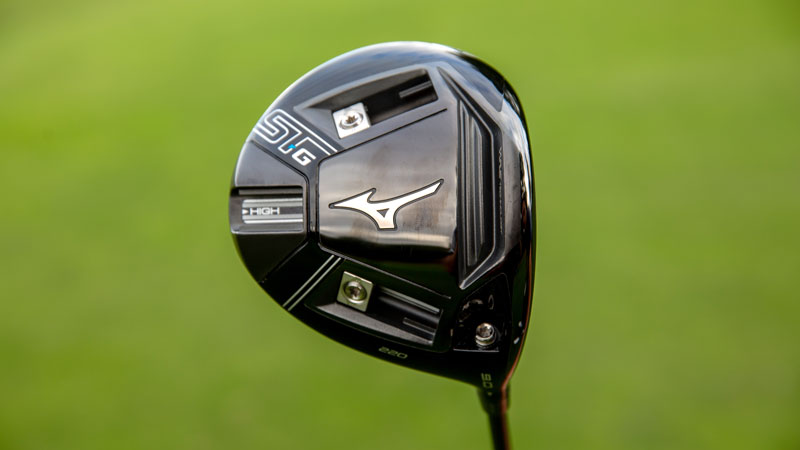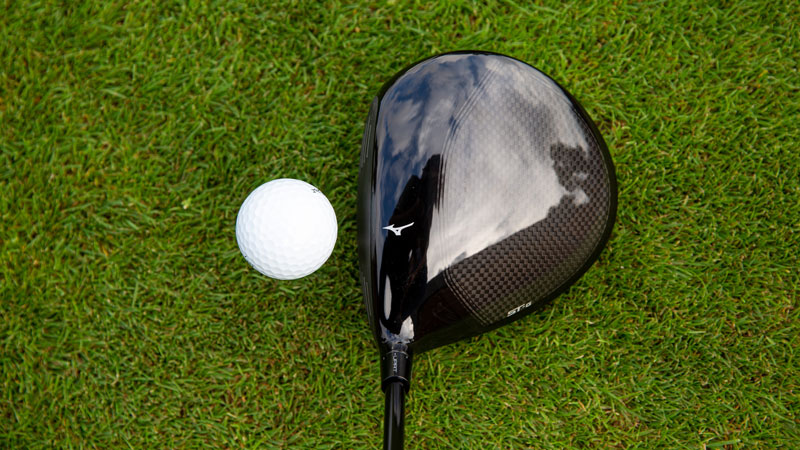Mizuno ST-G 220 Driver
Our verdict on the Mizuno ST-G 220 driver

The ST-G 220 is a versatile driver that can be set up to favour certain characteristics - be it distance, control or a specific shot shape - depending on the player but high spin golfers will really appreciate this new option. Go through a fitting and it will compete with the competition and if your driver is a few years old, we’re confident it will outperform it.
-
+
In its max distance/low spin setting, centred hits are as good as any. Can be set up to be extremely forgiving for golfers that want more control. Feels great from a wide area.
-
-
Longest weight setting also its least forgiving. Short stock shaft may cause some golfers to look elsewhere.
Why you can trust Golf Monthly

In this Mizuno ST-G 220 Driver review, Joel Tadman takes this super adjustable driver for a thorough test out on the golf course
Mizuno ST-G 220 Driver Review
Mizuno impressed us with the new ST-X and ST-Z 220 drivers at the start of this year which the brand said was the culmination of a three-year project to make a real statement in the metalwoods category - we would say this was achieved.
Now there is a third model, the ST-G 220, which offers a different address and spin profile as well as moveable weight.
Down behind the ball the ST-G 220 does look noticeably smaller than the ST-X and ST-Z despite still being 460cc in volume thanks to the taller face. It will certainly appeal more to the eye of the better player.

Make a few practice swings and you may notice a loud ‘whoosh’ sound, unmistakably made by the air passing over the weight tracks.
We tested the ST-G 220 driver on the Foresight Sports GC2 launch monitor in 9° in the stock Project X HZRDUS RDX Smoke 6.0 shaft with Titleist Pro V1x balls against our current fitted TaylorMade SIM2 driver.
We swung the Mizuno driver 2mph slower on average - this could be down to a combination of the air resistance from the tracks but also the shorter stock shaft of 45 inches.
But in the low spin setting (weights split and in the front of the tracks) the ball speed was actually very similar, so it became more efficient and the strikes were better. In like for like loft (9°) both produced almost identical launch, spin and peak height numbers with the SIM2 carrying three yards further. An impressive start for the Mizuno.
We then took it on the course for a full round at West Byfleet Golf Club and it took a while to settle in. It’s all very well smashing balls as hard as you can on a simulator, but control of direction is even more important when playing golf for real.
In the same low spin setting, it really impressed out of the middle. The head feels incredibly solid with a dense, powerful feel and the reward for centred strikes is a towering flight with a hint of curve at the top of the flight. In fact, workability was one of this driver’s strong suits in this setting.

Catch it poorly, however, and you’ll lose control fairly easily, which is where you have a decision to make. With the three tracks, you have options to make this a much more user-friendly driver. Mizuno says positioning both the weights in the shorter rear centre track is its most forgiving setting, becoming more forgiving than the super stable ST-X.
When we tested it with the weights at the back of the side tracks, the spin went up by about 200rpm and distance came down by eight yards. So there is clearly a trade off between distance and playability.
Over time, the shorter shaft should mean you have more control of the face than most low-spin drivers - we hit a few more fairways on the back nine once we got used to it.
For us, splitting the two weights in the centre of the tracks will probably provide the best blend of distance and forgiveness.
Save on golf gear with these Mizuno discount codes, covering shoes, clothing, bags, clubs, accessories & more.
Get the Golf Monthly Newsletter
Subscribe to the Golf Monthly newsletter to stay up to date with all the latest tour news, equipment news, reviews, head-to-heads and buyer’s guides from our team of experienced experts.

Joel has worked in the golf industry for over 15 years covering both instruction and more recently equipment. He now oversees all equipment and video content at Golf Monthly, managing a team of talented and passionate writers and presenters in delivering the most thorough and accurate reviews, buying advice, comparisons and deals to help the reader or viewer find exactly what they are looking for.
One of his career highlights came when covering the 2012 Masters he got to play the sacred Augusta National course on the Monday after the tournament concluded, shooting a respectable 86 with just one par and four birdies. To date, his best ever round of golf is a 5-under 67 back in 2011. He currently plays his golf at Burghley Park Golf Club in Stamford, Lincs, with a handicap index of 3.1.
Joel's current What's In The Bag?
Driver: Titleist GT3, 9°, Fujikura Ventus Black 6 S shaft.
Fairway wood: Titleist TSR3, 15°
Hybrid: Titleist TSi2, 18°
Irons: Titleist T150, 4-PW
Wedges: Titleist Vokey SM10, 50°, 54° and 58°
Putter: LAB Golf DF3
Ball: 2025 Titleist Pro V1x
-
 Chevron Championship Tee Times: Rounds One And Two
Chevron Championship Tee Times: Rounds One And TwoA look at when the players are teeing it up in the opening two rounds of the Chevron Championship - the first women's Major of the year
By Mike Hall Published
-
 Charley Hull Social Media Video Reveals Brutal Weather Conditions Ahead Of Chevron Championship
Charley Hull Social Media Video Reveals Brutal Weather Conditions Ahead Of Chevron ChampionshipCharley Hull has added a video to her Instagram stories showing strong wind and heavy rain in Texas ahead of the first women's Major of the year
By Mike Hall Published
-
 How To Watch Chevron Championship 2025: Live Streams, TV Channels, Schedule
How To Watch Chevron Championship 2025: Live Streams, TV Channels, ScheduleAll the details on how to watch Chevron Championship online and on TV from anywhere, as the first women's Major of 2025 takes place at Carlton Woods this week.
By Roderick Easdale Published
